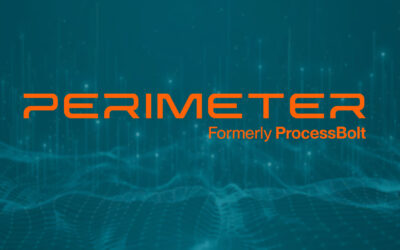A recent report by the National Cyber Security Alliance (NCSA) indicates the sorry state of cybersecurity for businesses. The report shows just how poorly businesses are able to withstand a data breach. According to the report, up to 44% of those interviewed have experienced a data breach. Of those businesses:
- 69 percent were offline for a limited time
- 37 percent suffered a financial loss
- 25 percent filed for bankruptcy
- 10 percent permanently closed their doors
In addition, 46% of the businesses interviewed feel they are prepared to respond to a data breach.
The business risks involved in a data breach are too numerous to name here, and avoiding these risks is getting tougher every day. When a data breach involves a third-party vendor, the complications are compounded, and ending the contract with that vendor will not solve the problem. You need to dig deep into your own vendor evaluation process and identify the gaps that led to that risk.
Companies that conduct third-party security risk assessments either use their own manual approach involving spreadsheets or locked word documents, or they use an automated platform. While the manual approach may seem ideal to many organizations in terms of flexibility and cost, there are some very serious security issues that can arise from this method.
The Problems with Manual
Emailing a security risk assessment to all of your vendors can be a daunting task, but the real work begins when those completed questionnaires come back. Someone on your security team will need to perform a manual evaluation process that looks something like this:
- Analyze the security risk assessment to determine if it was completed thoroughly and all supporting artifacts are included
- Determine the vendor’s overall score or classification by tallying up the answers in the questionnaire according to your own internal scoring methodology
- Classify the vendor as low, medium, high or critical risk based on this score
- Determine if your company can move forward with this vendor as is, if you need to request remediation or if you end the vendor relationship according to your internal threshold for risk.
Since each of the four steps above require human intervention and decision-making, there is plenty of room for error including:
- Miscalculation of a vendor’s score
- Not keeping your internal scoring methodology up to date
- Wrong classification of the vendor
- Requesting the wrong remediation steps
- Allowing a risky vendor to remain under contract based on the relationship and not the score
5 Benefits of an Automated Approach
Companies that use an automated platform to conduct third-party security risk assessments can realize numerous benefits. While there is always a cost involved in automated platforms, these costs can easily be offset by the labor hours saved by your security team. The following benefits are typical of customers that adopt the ProcessBolt vendor risk management platform:
1. Reduced time spent processing security questionnaires. If your security team spends hours or days each week processing questionnaires, automating this process can save valuable time and payroll expenses. With ProcessBolt, your security questionnaires are stored in the platform and delivered to your vendors. Once the questionnaires are completed by the vendors and sent back to ProcessBolt, our system classifies the vendor based on your scoring methodology, not ours. Each questionnaire is processed according to the same guidelines, so you know the classification is accurate.
2. Eliminate human error. Using automation, ProcessBolt eliminates human errors such as scoring calculations, which can lead to the wrong vendor classification or the wrong remediation plan. By removing the human element, accuracy and peace of mind are increased.
3. See your overall security landscape at a glance. As security risk assessments are received and processed, your vendors will be automatically classified according to your internal thresholds and added to the ProcessBolt dashboard. Here you can easily see your company’s security landscape and determine your overall level of third-party risk.
4. Easily pinpoint your most risky vendors. As vendors move through the automated process, those that are classified as high or critical risk will rise to the top so you can take action immediately, either through remediation or removal.
5. Workflow keeps it all on schedule. If you’re tired of sending email reminders to your vendors to complete security questionnaires, ProcessBolt’s automated workflow is the solution. The system automatically sends reminder emails according to your timeline and notifies you every step of the way when a task is completed.
Complete this form to receive a personalized walk-through of ProcessBolt and learn how we can enhance your organization’s third-party risk management program.




